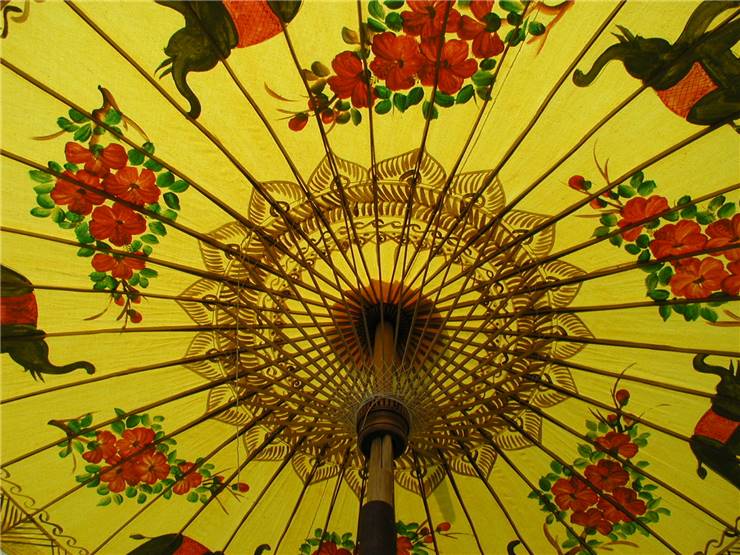Umbrellas in Religion - Meaning and Origins
From the moment that umbrellas and parasols were created in Ancient Egypt, Assyria, India and China over 3000 years ago, it started being associated with ceremonies of "sun worshiping" religions, especially in Egypt. As their manufacture came at the great cost, items such as parasols and umbrellas were viewed as objects of power, status symbol, and were used to protect the important people, royalty, religious leaders and sacred objects from the scorching heat of the sun. As such, religions all around the world adopted parasols into their ceremonies - from the Greek and Roman priests in the 1st millennia BC Europe to the Buddhism in Asia.
In modern day, parasols and umbrellas are present in several religions. After the fall of Roman Empire and rise of Christianity, Catholic Church adopted umbrella (or umbraculum) in several of their papal ceremonies. Even though today popes no longer carry umbrella personally, it remains remembered as a part of their coat of arms. Umbraculum (usually made from red and gold fabric, held in partially unfolded state) is most often used during succession ceremonies when new pope assumes the power and becomes the leader of Catholic Church, but it can also be used in various liturgies when it is held above Holy Sacrament.

Chinese paper umbrellas represent one of the most celebrated umbrellas in modern religions. They are viewed as bringers of good fortune, wars against evil spirits, bringers of longevity and are used in many celebration ceremonies, most notably weddings, young males rite-of-passage, and funerals.
White out a doubt, religion with greatest respect towards umbrellas is Buddhism. Followers of that religion loot at the umbrella as a symbol of Earth, center of the universe and spiritual support. There are various designs of Buddhist parasols, decorated with overhanging skirts (with dome representing wisdom, and skirts compassion), octagonal shapes (symbolizing Noble Eightfold Path) of the dome and more. Over the past few thousand years they implemented umbrellas and parasols in many of their ceremonies, and they are especially important in processionals and mobile temples where they are used as a mark of respect toward various present dignitaries (in Tibet, religious heads stand below silk and secular rulers under parasol that is embroidered with peacock feathers). They respect umbrella so much that they even worship goddess Sitapatra, whose name can be translated as "the white umbrella".

